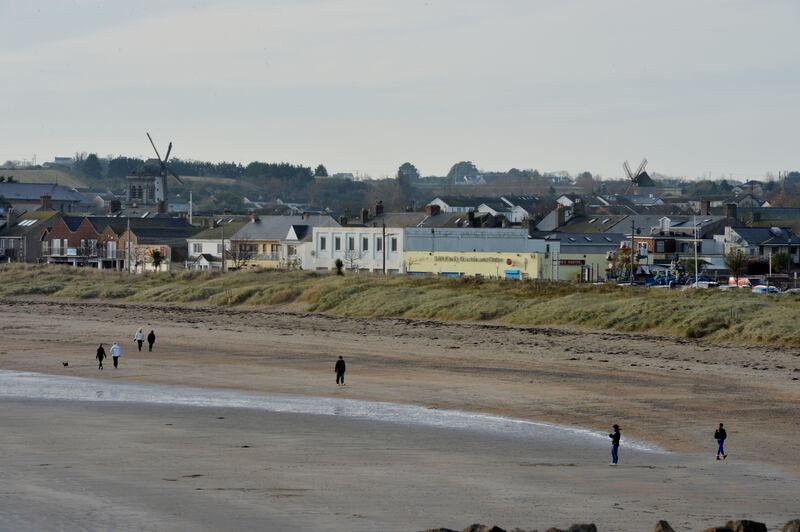It is a curious thing to wake up on a Monday morning and learn that you live in paradise – or a “good enough” version of it anyway. But that’s what happened to us here in Skerries, north Co Dublin, when the news was pinged across the town’s WhatsApp group and Facebook pages. However briefly, we have found ourselves perched on the vertiginous spot of “best place in the world to live”.
The plaudit came via a new book, The Good Enough Life by University College London’s Prof Daniel Miller. The anthropologist spent 16 months among the people of the pseudonymous town of “Cuan”, predominantly its retirees, as part of an examination of “how life could and should be lived”. Prof Miller refuses to reveal the actual town but The Irish Times said it rhymed with “fairies” and reading almost any page of the book confirms that it is Skerries.
Places, personalities, events and encounters are so recognisable that you can almost hear your own voice and that of neighbours in the conversations, phrases, experiences and gripes that are repeated most often. The book is rigorous and detailed and, frankly, very hard to quibble with. Although, if Prof Miller had torn the town apart, that might have been a different matter altogether ...
He doesn’t, of course. The upshot is that people told him they are nuts about the place. “The people of Cuan are simply besotted by Cuan; the term ‘heaven’ is not infrequently used,” Prof Miller writes. His experience led him to conclude that the strength of the community, variety of activities, and overall quality of life justify their claim.
READ MORE
While life in the town is not perfect, “for all the faults ... it is hard to find a currently existing society that is demonstrably better”.
That’s our new tourist slogan sorted.
The revelation led a friend from the non-heavenly world beyond to message me: “You’ll all be insufferable now.” To which the only reply was that we probably already were. Happily so.
Prof Miller describes how, without prompting, he was constantly being told just how great the town is. “It just seemed important to so many people to drop this sentiment somewhere into the conversation.”

In truth, there are many Irish towns and villages into which Prof Miller could have landed and found himself meeting similarly positive sentiments every time he popped out for milk. I’ve encountered buoyant civic pride and volunteerism in towns from Bantry to Ballyshannon. And while Skerries is a beautiful spot – sticking out into the Irish Sea so that the sun rises over one beach, sets over the other, and gives views all the way up to the Mourne Mountains – the coasts of Meath and Louth north of us are also dotted with long, stunning beaches.
He did later clarify that he is “not saying it’s a better place than anywhere else in Ireland” and that there may be places “even more wonderful” (ah now, don’t burst our bubble) but he found the town to be an exemplar of “where people have achieved this sense of community”.
How did Skerries reach this elevated point? For much of the 20th century, it was a popular holiday destination. There was a once-famous holiday camp at the top of the harbour at Red Island (actually a tied island, reclaimed long ago despite occasional flooding to remind us it’s only on loan). There was a cinema and ballroom; even a roller disco at one point.
But that was already another era to those of us growing up in Skerries during the 1980s.
The town’s hotel was heading into its final years. The holiday camp was demolished. The roller disco went the way of all other roller discos.
It felt like a quiet, unregarded place to grow up in. Despite the train line passing through, the town was off the beaten track given the Dublin-Belfast road was – and remains – several miles away. Even now, visitors are often surprised by the rural feel of this part of Dublin, where there are boreens bound by farmland. While the capital’s lights leak a low orange glow on the southern night sky, Skerries still feels like an escape from the city. It is connected but always on its own terms.

In recent decades, Skerries has thrived in the main. The town centre never emptied out but became busier, so that its spirit didn’t need reviving only fanning. A watermill and its two ancient windmills were renovated and became totems. A public garden was built in the town centre. An upgraded Carnegie library is nearing completion.
As the population has crept up to almost 11,000, there have been new housing estates but the natural borders of hills on one side and the Irish Sea on the other have so far kept it largely hemmed in and not yet too big. However, the knock-on effect has been crazily high house prices (common conversation starter: “Have you seen how much they’re asking?”) and leaves us wondering how our children will be able to return and settle here as their parents did.

In The Good Enough Life, Prof Miller is struck by the sheer number of activities in Skerries, identifying the particular importance of sport. All the major clubs bar the cricket club (The Hills) have their grounds within the town. All that is missing is a swimming pool, but the sea is more than ever a focal point. Alongside the traditional sailing and swimming, there are now kitesurfers, windsurfers, rowers, kayakers, paddle boarders and far more currachs than you would expect to meet on this side of Ireland.
[ Skerries men take to the sea in a currach they built themselvesOpens in new window ]
But where Prof Miller most nails it is in the importance of the “blow-ins”. Like many Irish towns, there can be a competitive element to just how deep family roots go (did I mention I can trace mine back to a relative buried almost 300 years ago? I can show you the grave if you don’t believe me) but newcomers have been key to so much of the town’s spirit.
He notes an initial unfriendliness towards them when they first arrived into new housing developments in the 1970s and were scorned for supposed pretensions. One went shopping for yoghurt only for the shopkeeper to answer: “The woman wants yoghurt. What the hell is yoghurt?” (For the record, we now serve a wide range of yoghurts.)
Yet, “blow-ins” now form most of the town’s population and these newcomers were, and continue to be, a driving force behind much of the volunteerism and civic spirit that have already pushed Skerries towards wider recognition. Winning the National Tidy Towns in 2016 was arguably the pinnacle of this, an achievement which is commemorated in a giant sculpture based on the trophy and placed at the very top of the town.
There are flaws, noted in the book by Prof Miller and even the most exuberant townspeople. That Skerries has no hotel is a continuing shame and makes it an outlier when compared with towns of a similar size. Prof Miller writes of constantly being told that the town needs one, as well as a swimming pool and a cinema. On a deeper societal level, he notes the fault lines and class division that exist within the population.
But Prof Miller has given Skerries a compliment and it only seems right to take it. We know we’re lucky. We know it’s a good spot to be. We know people have worked very hard to make it that way. And, now more than ever, we are reminded daily of the privilege of life here and how any day that is “good enough” – in Skerries or anywhere – is one to be thankful for.
Shane Hegarty is a children’s author. His latest series is The Shop of Impossible Ice Creams.

Some facts about Skerries
St Patrick is a big deal in the town, with residents nicknamed “the Goats” because legend has it that locals stole his goat, cooked and ate it – after which he cursed them to bleating until they owned up.
It’s claimed that St Patrick stayed on one of the three islands just off the shore. At one bathing place there’s even a narrow gouge in the rocks known as “St Patrick’s footstep” after he took a giant stride over when angry about that missing goat.
Percy French is reputed to have written the song The Mountains of Mourne when looking out at them during a visit to Skerries. You can take in that view from a commemorative bench by the harbour.
Skerries is unusual on the east coast in having a west-facing harbour, and at the merest hint of a summer’s day crowds spill on to the street from the pubs and restaurants.
- Find The Irish Times on WhatsApp and stay up to date




















